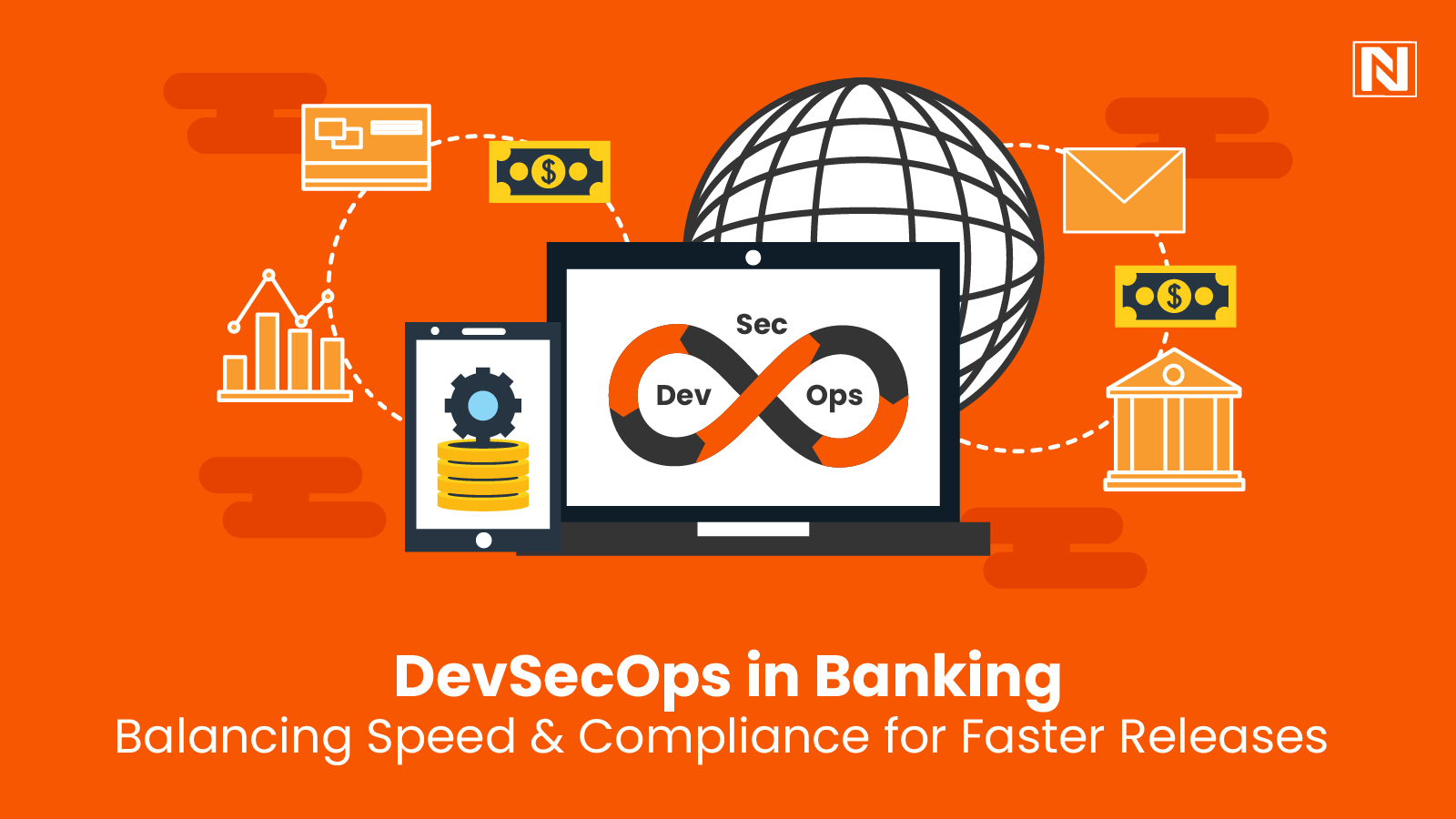
The banking industry thrives on innovation, but stringent compliance demands often slow down releases. What if you could accelerate deployments without compromising security? Enter DevSecOps in Banking, a game-changing approach that merges development, security, and operations to deliver robust applications at lightning speed.
Curious how top banks are achieving this delicate balance? Let’s dive into the strategies reshaping secure, agile banking.
The Need for DevSecOps in Financial Services
Banks operate in one of the most heavily regulated industries, with mandates like GDPR, PSD2, SOX, and Basel III dictating strict security and compliance protocols. Traditionally, security was a final checkpoint, a gate that often slowed down releases. But in today’s fast-paced digital economy, this waterfall approach is no longer sustainable.
DevSecOps shifts security left, meaning security checks happen continuously during coding, testing, and deployment rather than at the end. This proactive approach:
- Reduces vulnerabilities early, cutting remediation costs.
- Automates compliance checks, ensuring regulatory standards are met without manual bottlenecks.
- Enables faster innovation, allowing banks to roll out features quickly while maintaining trust.
For financial institutions, the stakes are high. A single breach can result in massive fines, reputational damage, and loss of customer trust. DevSecOps: Why is it important for banking? Because it’s the only way to stay competitive without compromising security.
Key Challenges in Implementing DevSecOps for Banks
While DevSecOps offers immense benefits, banks face unique hurdles in adoption:

1. Regulatory Compliance & Audit Trails
Banks must document every change for audits. DevSecOps tools must integrate compliance tracking into CI/CD pipelines, ensuring every release meets legal standards without slowing deployments.
2. Legacy Systems & Cultural Resistance
Many banks still rely on monolithic architectures and siloed teams. Shifting to DevSecOps requires modernizing infrastructure and fostering collaboration between Dev, Sec, and Ops teams.
3. Managing Third-Party Risks
Banks use numerous third-party vendors for APIs, cloud services, and software components. DevSecOps must include continuous monitoring of external dependencies to prevent supply chain attacks.
4. Real-Time Threat Detection
With fraud and cyberattacks growing more sophisticated, banks need automated security scanning (SAST, DAST, IAST) and AI-driven anomaly detection in production environments.
DID YOU KNOW?
The DevSecOps market is projected to reach a value of US$ 45.93 billion by 2032, growing at a compound annual growth rate (CAGR) of 24.7%.
Best Practices for Implementing DevSecOps in Banking
To successfully adopt DevSecOps, banks should follow these strategies:

1. Automate Security & Compliance Checks
- Embed Static Application Security Testing (SAST) and Dynamic Application Security Testing (DAST) into CI/CD pipelines.
- Use policy-as-code tools (like Open Policy Agent) to enforce compliance rules automatically.
2. Shift Security Left Without Slowing Down Dev Teams
- Provide developers with real-time security feedback via IDE plugins (e.g., Snyk, Checkmarx).
- Use Infrastructure as Code (IaC) scanning to detect misconfigurations before deployment.
3. Foster a Security-First Culture
- Train developers on secure coding practices (OWASP Top 10, secure API design).
- Break down silos between security and development teams with cross-functional DevSecOps squads.
4. Continuous Monitoring & Incident Response
- Implement Runtime Application Self-Protection (RASP) to detect and block attacks in real time.
- Use AI-driven SIEM (Security Information and Event Management) solutions for proactive threat hunting.
5. Balance Speed & Governance with Feature Flags
- Use feature toggles to roll out updates incrementally, allowing security teams to monitor risks in production before full release.
A MUST READ – Top DevOps Tools to Supercharge Your Workflow in 2025
The Future of DevSecOps in Banking
As cyber threats evolve, so must security strategies. Emerging trends include:
1. AI-Powered Security Automation – Machine learning for anomaly detection and auto-remediation.
2. Zero Trust Architecture (ZTA) – Continuous identity verification embedded in DevSecOps workflows.
3. Quantum-Resistant Cryptography – Preparing pipelines for post-quantum security challenges.
Banks that embrace DevSecOps today will lead tomorrow’s financial landscape, delivering innovation at speed while maintaining ironclad security.
Conclusion
The question isn’t “Why is DevSecOps important for banking?”, it’s “How fast can we implement it?” Financial institutions that integrate security seamlessly into DevOps will achieve:
1. Faster time-to-market with automated security checks.
2. Lower breach risks with continuous monitoring.
3. Effortless compliance through policy-as-code.
The future of banking belongs to those who balance speed and security, DevSecOps is the key.
Frequently Asked Questions
What is DevSecOps in banking?
DevSecOps in banking integrates development, security, and operations to enable faster, secure software releases while ensuring compliance.
Why is DevSecOps important for banks?
It helps banks deliver innovations quickly without compromising security or violating regulatory standards.
What are the main challenges banks face with DevSecOps?
Key challenges include regulatory compliance, legacy systems, third-party risks, and real-time threat detection.
How can banks implement DevSecOps effectively?
By automating security checks, shifting security left, fostering a security-first culture, and using continuous monitoring tools.
What trends are shaping the future of DevSecOps in banking?
AI-powered security, Zero Trust Architecture, and quantum-resistant cryptography are leading the way.